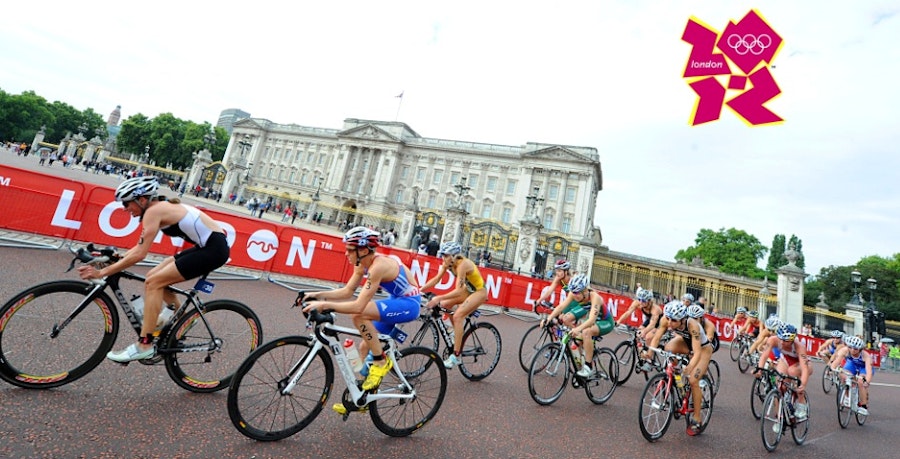
Your video is loading. If the video fails to load please upgrade your Flash player
It always plays a part in deciding the podium in any triathlon race, and the course for the triathlon event at the London 2012 Olympic Games is an interesting one, with a long one-lap 1.5km swim, a technically demanding 43km bike leg and a deceptively tough 10km run. Here is an overview of the course and its pressure points.
So far, the triathlon courses at the Olympic Games have all offered something different. Sydney had a terrain that included a number of rises without any major hills, while Athens is widely regarded as one of the toughest ever courses, with a steep hill capped off with a hairpin turn at the summit. Beijing also offered a tough bike course, and added in hot weather. This year downtown London is the background for the triathlon events at the 2012 Olympic Games.


The course is flat and technically demanding but last year proved breakaways were possible, with New Zealand’s James Elvery and Alistair Brownlee rocketing off the front, and then Russia’s Alexander Bryukhankov and Spain’sIvan Rana bridging up to join them in last year’s race.
Triathlon at the London 2012 Olympic Games: At a glance
Swim - One-lap, 1.5-kilometre swim in the Serpentine, with a pontoon start on the north side of the lake.
Bike - Seven-lap, 43-kilometre cycle leg that starts with transition on Serpentine Road, then down South Carriage Drive towards Hyde Park Corner. From there the loop takes in London icons like Constitution Hill and Buckingham Palace. The course is generally flat, with no climbs, but is technically demanding and has over 100 turns.
Run - Four-lap, 10-kilometre run on a flat course, that runs along the side of the Serpentine.
At the end of the bike athletes will then come back through transition to finish the course on the 10-kilometre four-lap run, which circles the Serpentine again. The lead out is the same as the bike, but before reaching the corner of West Carriage and South Carriage Drive they will need to turn back and run down towards the southern edge of the Serpentine. The elite athletes will run along the edge of Serpentine, passing the Lido, and then run counter-clockwise around the eastern part of the Serpentine before coming back on Serpentine road. From there it’s approximately 750m straight on into the transition area.
One of the most interesting parts about the run is that while it appears flat, it actually isn’t. Plenty of athletes commented after last year’s London races that the undulating road had been a nice surprise. And none more so than Alistair Brownlee, “I was quite surprised that the run was good, it had different surfaces and corners and hills and stuff so I quite enjoyed that,” he said. It’s still very fast, last year five men ran under 30 minutes for the 10km and three women beat the 34 minute mark.
The final finishing straight where the 2012 Olympic Gold medallists for triathlon will be crowned is in front of the grandstands on the western edge of Serpentine Road. Overall the course is designed with fans in mind, as athletes will pass through the finish area a total of 12 times.
Triathlon will also be one of the only Olympic sports with free viewing points, available along all segments of the race. For more on how to travel to the venue and where to watch, visit the London 2012 website here

Click here to view the interactive course map
Related Event: London 2012 Olympic Games
| Results: Elite Women | |||
|---|---|---|---|
| 1. | Nicola Spirig | SUI | 01:59:48 |
| 2. | Lisa Norden | SWE | 01:59:48 |
| 3. | Erin Densham | AUS | 01:59:50 |
| 4. | Sarah True | USA | 02:00:00 |
| 5. | Helen Jenkins | GBR | 02:00:19 |
| 6. | Andrea Hansen | NZL | 02:00:36 |
| 7. | Ainhoa Murua Zubizarreta | ESP | 02:00:56 |
| DNF. | Emma Moffatt | AUS | DNF |
| DNF. | Kathy Tremblay | CAN | DNF |
| DNF. | Yuliya Yelistratova | UKR | DNF |
| Results: Elite Men | |||
|---|---|---|---|
| 1. | Alistair Brownlee | GBR | 01:46:25 |
| 2. | Javier Gomez Noya | ESP | 01:46:36 |
| 3. | Jonathan Brownlee | GBR | 01:46:56 |
| 4. | David Hauss | FRA | 01:47:14 |
| 5. | Laurent Vidal | FRA | 01:47:21 |
| 6. | Jan Frodeno | GER | 01:47:26 |
| 7. | Alexander Bryukhankov | RUS | 01:47:35 |
| 8. | Sven Riederer | SUI | 01:47:46 |
| 9. | Joao Silva | POR | 01:47:51 |
| 10. | Alessandro Fabian | ITA | 01:48:03 |

